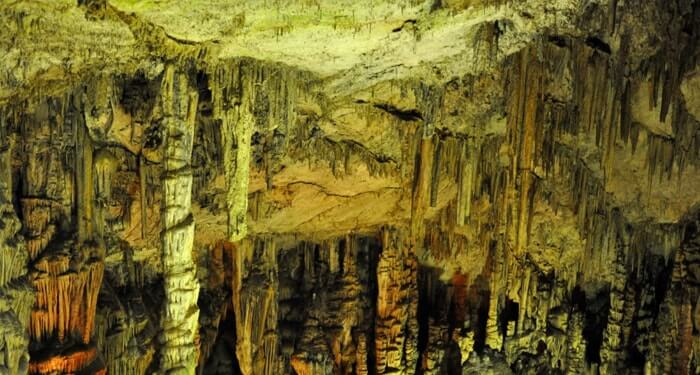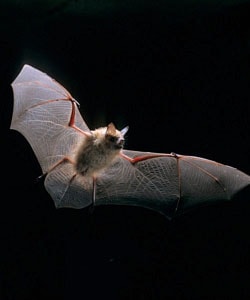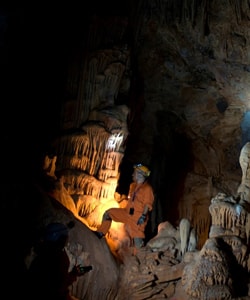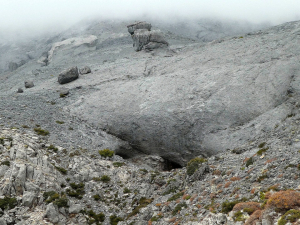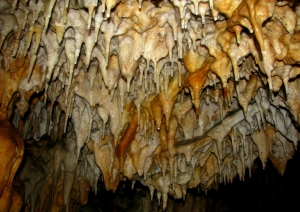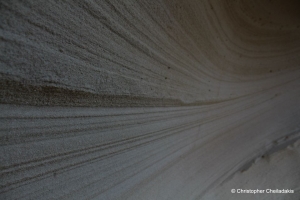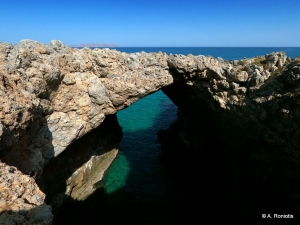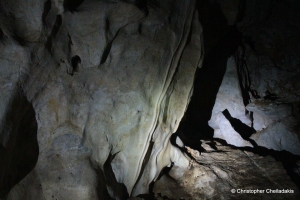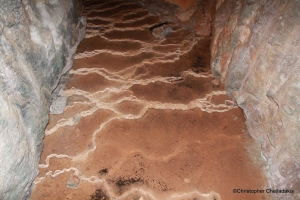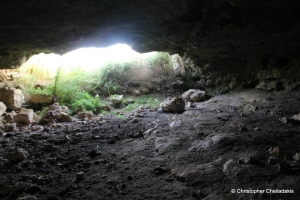Leon Cave was officially discovered on 11 August 2008 by a French-Greek team of speleologists, exploring the White Mountains of Chania (area Atzinolakos, near Melidoni of Fre municipality). However, its existence was known 15 years ago, during a French mission of the Catamaran Club. The area of Atzines has high speleological interest which has attracted mainly French, exploratory missions.
The cave of Petsis or Metaxaris is located at position Karavotopos, near Koutalis beach, in the area of the village Kokkino Horio in province Apokoronas. The cave has a very rich decor and is about 100 meters long, being one of the most important in the area (which has a large number of caves). Its interior has a lot of clay, so it's very slippery.
At the north side of Mount Bobias, between Fodele and Agia Pelagia, there is a small and unknown cave. Actually it is a long rock shelter formed by the impressive psammite rocks that dominate this area. The cave is located at the north side of the mountain, at the top of a vertical cliff of height 100 meters, in the middle of the 'Trail of the Pilgrims' towards the the church of Agios Sozon at Cape Stavros.
Below the Old National Road is the large sea cave of Kako Oros, a special geological formation relatively unknown to most locals. There is a big hole in the roof of the cave, creating an impressive stone arch and a natural skylight.
One of the many caves around Kalo Nero is the Vorinos (north) Spilios located just opposite the very old monastery that adorns the area, Panagia Zoodochos Pigi, on the slope east and higher than the temple. Access to the cave is not particularly difficult, and requires climbing only 10 minutes away from the monastery.
The cave of Kera Spiliotisa is located at Flomes position by Vrysses, Chania. The area is very tough to reach due to lush vegetation and the narrow entrance of the cave is not easily seen. It is located next to the area where archaeologists position the ancient town Pergamos or Polihna.
Opposite the perennial plane tree in Keramota we meet the cave of Vrissi (Fountain) of Keramota. This cave despite the relatively small depth is really amazing. From the cavern end comes out water throughout the year and is stored in the village's fountain a few meters away. Several years ago the cave of the fountain was a very small hole from where the water came out. But from this tiny hole one could see the greatest width of the interior. Thus, the inhabitants of Keramota decided to break the rock and reach deep into the cave to the original spring of the water.
It is located right at the top of the hill but on the south side and not in the north where the excavations are. In front of the entrance there is an ancient stone yard and two large stones playing the role of a door. The cave inside has a spacious hall and is devoid of cave decoration. The large hall is greenish due to moisture. There is a very narrow gallery that led deeper into the mountain which however today is blocked by soil and manure.






